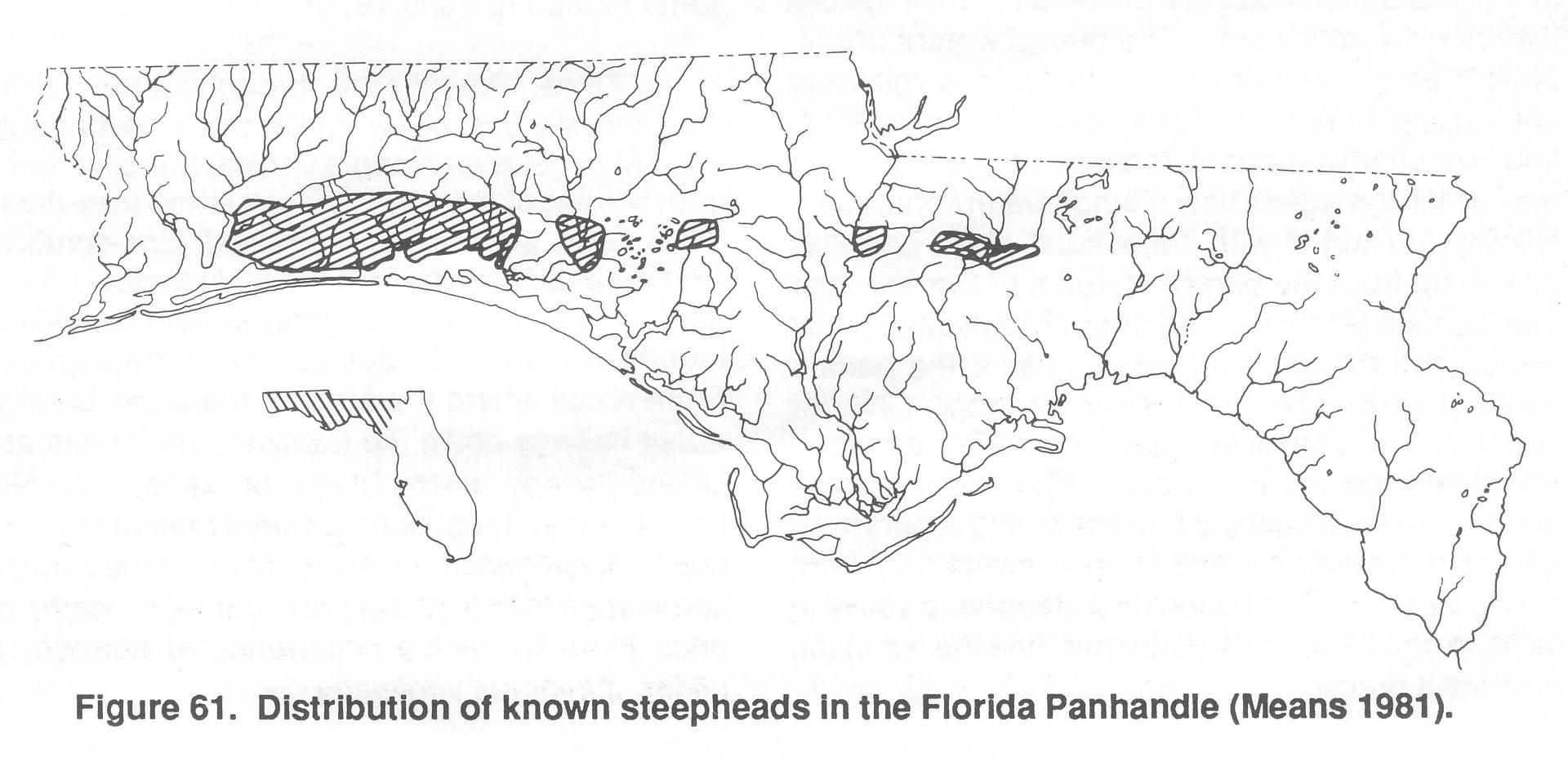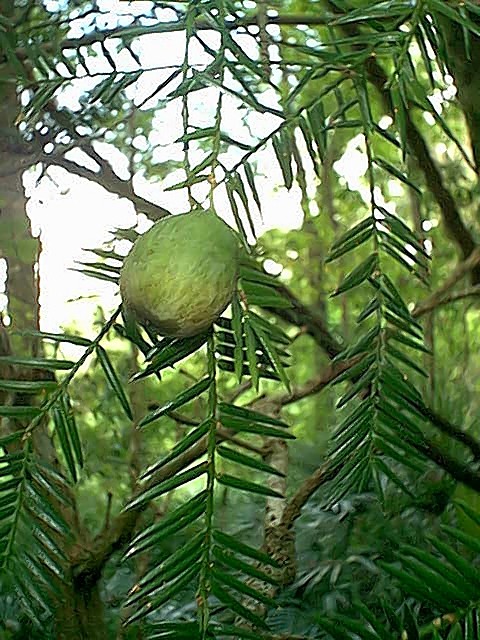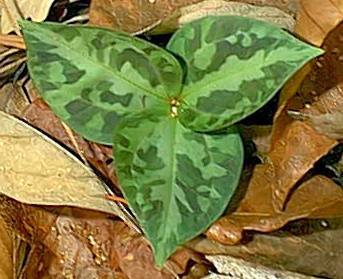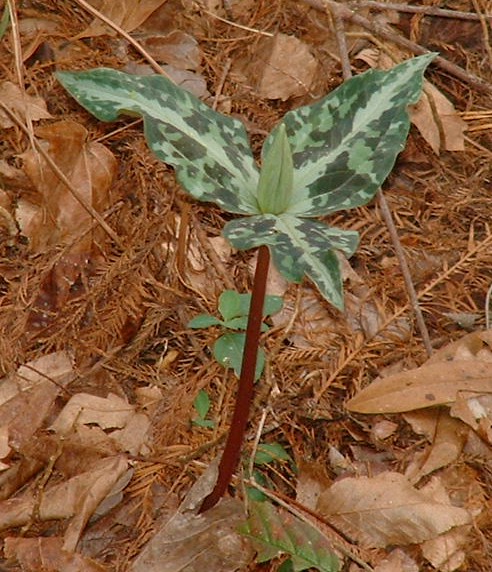 |
 |
 |
|
Steepheads
|
|
Steepheads
are one of the most awesome, unique, diverse and sensitive ecosystems in the entire Southeast! Steephead's are deep
ravines that occur in Upland Sandhill or Clayhill habitats. A steephead itself is like a giant living organism or ecosystem.
At the head of steephead ravines are springs or seepages of clear, filtered water which emerge from the ground and constantly
erode the gullies headward. The growth of steepheads over time is like placing your hand in a sandbox and moving your
hand through the sand while spreading fingers. Some steepheads can have multiple ravines, all with numerous springs
and seepages. As steepheads age the valleys grow longer and deeper. Steephead ravines can be 80 feet or more in
depth and are truly canyons in Florida's low overall elevation! (Below)
A steephead distribution map for Florida (Courtesy of D. Bruce Means). Some steepheads do occur in
the northern Peninsula - Goldhead Branch State Park is the most outstanding (between Gainesville and Jacksonville).

Steephead's provide very unique and sheltered habitat for many specially
adapted and delicate species of animals and plants. Steepheads abound in amphibian species because of their cooler and
insolated nature. During the heat of the summer, steepheads are much cooler than the surrounding uplands because of
their deeper elevation and their heavily shaded overstory of hardwoods. Steepheads have lush, dense vegetation which
provides shelter and cover for many species of animals, especially frogs and salamanders. On the bottom of steephead
valleys, along small clear-running streams, often lay dense carpets of spagnum moss which is heaven for many salamander
species!
|
|
 |
|

Numerous uncommon, rare and endangered plant species occur in steephead
ravines, some of which are found in mountainous areas 500-1000+ miles north of Florida. During the Ice-Ages, as glaciers
pushed northern vegetation southward, these plants remained in the sheltered ravines when the glaciers retreated. Some
of these interesting species include: the Florida Torreya tree, the Florida Yew, Ashe Magnolia, Pyramid Magnolia, Mountain
Laurel, various Azalea species, Florida Anise, Beech trees, White oak trees and a variety of other northern hardwood
trees. Many Appalachian mountain and northern herbaceous plant species are also found on Steephead slopes and ravines
such as: several Trillium species, Trout lilies, Wild Ginger, and a variety of orchids.
(Above Right) Trillium or Wakerobin - Liberty
Co., FL
(Below Right) Trillium or Wakerobin - Jackson
Co., FL
|
|
|
|
 |
|
(Left) Florida Torreya
tree with fruit
(Torreya taxifolia). A Federally
protected ancient
yew species.
Torreya State Park, Liberty Co., FL.
Below information is listed about the preservation and study of the
Florida Torreya Tree.
Torreya Guardians
is a self-organized group of naturalists, botanists, ecologists, and others with a deep concern for biodiversity protection,
who have chosen to use the internet as a tool for discussing ideas, posting plans, and taking a variety of actions in behalf
of our most endangered conifer tree: Torreya taxifolia.
TORREYA GUARDIANS Link
(Below) Two Trilliums from northwest Florida.


|
 |
|
|
|
|



